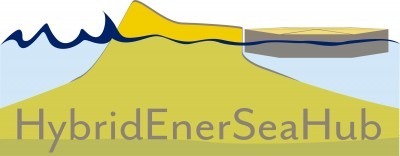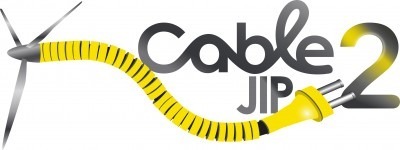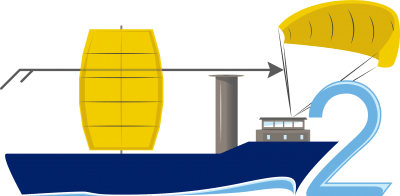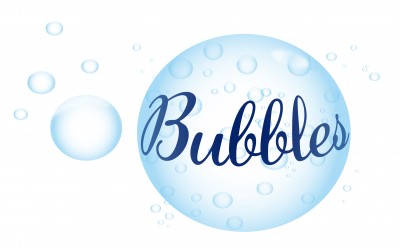Five fascinating projects tackle the latest offshore and shipping topics
These Joint Industry Projects examine the potential of a partially floating energy hub, improved bubble screen use, a methodology for testing and evaluating control, the mechanical loading of electrical cables, and wind assisted ship propulsion.
HybridEnerSeaHub
 To support cost-effective renewable energy production far out at sea there is a need for Operations and Maintenance (O&M) support, safe and efficient energy conversion, as well as the transport and storage of renewable energy. The HybridEnerSeaHub JIP aims to tackle all of these issues by developing a comprehensive design for a partially floating energy hub in the North Sea.
To support cost-effective renewable energy production far out at sea there is a need for Operations and Maintenance (O&M) support, safe and efficient energy conversion, as well as the transport and storage of renewable energy. The HybridEnerSeaHub JIP aims to tackle all of these issues by developing a comprehensive design for a partially floating energy hub in the North Sea.
The possibility of using floating modules will be investigated to support the functionality of the energy island in every stage of its lifecycle. This
modular approach could make the island more adaptive to the needs of future activities such as floating workshops, and storage facilities can easily be attached and relocated. Furthermore, a partially floating island may have a smaller impact on marine life and the surroundings. On the other hand, motion requirements and mooring loads could potentially set a practical limitation for a floating island. Therefore, a combination of floating modules connected to a reclaimed island will be investigated.
HybridEnerSeaHub started in the autumn of 2019 and will run for 2.5 years.
www.marin.nl/jips/hybridhub | Erik-Jan de Ridder, e.d.ridder@marin.nl
CABLE 2
 Cable 1 (2017-2019) was an RVO (Netherlands Enterprise Agency) subsidised research project with the aim of studying the use of a semistatic electrical cable for the power take-off from a floating offshore wind turbine. During the project, a fully operational simulation model was developed for assessing the ultimate life and fatigue life of a free hanging electrical cable under the floating offshore wind turbine.
Cable 1 (2017-2019) was an RVO (Netherlands Enterprise Agency) subsidised research project with the aim of studying the use of a semistatic electrical cable for the power take-off from a floating offshore wind turbine. During the project, a fully operational simulation model was developed for assessing the ultimate life and fatigue life of a free hanging electrical cable under the floating offshore wind turbine.
In the sequel Cable 2 JIP, work will continue towards developing the required technology readiness level for real projects. In the new project the electrical cable under a floating offshore wind turbine is just one example. Free spanning, bottom-fixed, floating substation, electric CALM buoy and floating solar in between bottom-fixed wind will be studied as well. The ultimate objective is to obtain a firm grip on the mechanical loading of the electrical cable and its components during the 20-30 year lifetime offshore. Additionally, the project aims to minimise risks and reduce the levelised cost of energy of the (future) offshore renewable energy industry.
www.marin.nl/jips/cable-2 | Jaap de Wilde, j.dewilde@marin.nl
WiSP 2
 After a very successful first Wind assisted Ship Propulsion (WiSP) Joint Industry Project, some open ends and new insights were revealed. For this reason a follow-up JIP will be launched. WiSP 2 will focus on making evaluations within EEDI and EEXI, but also from real operational conditions. The aim is to prove what kind of fuel savings shipowners can achieve, enabling them to make informed investment decisions, whilst also keeping the upcoming CII requirements in mind.
After a very successful first Wind assisted Ship Propulsion (WiSP) Joint Industry Project, some open ends and new insights were revealed. For this reason a follow-up JIP will be launched. WiSP 2 will focus on making evaluations within EEDI and EEXI, but also from real operational conditions. The aim is to prove what kind of fuel savings shipowners can achieve, enabling them to make informed investment decisions, whilst also keeping the upcoming CII requirements in mind.
WiSP 2 will be the gateway to WASP adoption by the maritime industry.
www.marin.nl/jips/wisp-2 | Patrick Hooijmans, p.hooijmans@marin.nl
Bubbles
 During installation of monopiles and jackets at sea, the noise generated by high-energy piling harms the marine environment. To mitigate the impact of this noise, governments have adopted noise limits for pile-driving operators and air bubble curtains are used to reduce the sound levels in the surrounding area.
During installation of monopiles and jackets at sea, the noise generated by high-energy piling harms the marine environment. To mitigate the impact of this noise, governments have adopted noise limits for pile-driving operators and air bubble curtains are used to reduce the sound levels in the surrounding area.
Within the Bubbles JIP, research institutes, companies specialised in installation and marine system suppliers are working together to achieve more efficient and effective use of bubble curtains. The JIP participants aim to get a better understanding of bubble screen use for specific projects, and how they can be improved to control the noise levels, therefore reducing the risks of the installation project.
The Bubbles JIP started in April 2020 and will have a duration of two years.
www.marin.nl/jips/bubbles | Linda Kemp, l.kemp@marin.nl
Innovation in Control
 Offshore vessels are becoming more and more advanced, with multiple control systems installed on board nowadays. These control systems consist of DP systems, motion compensated gangways, cranes, grippers, etc. But what is currently lacking is a structured, well-defined and broadly accepted methodology to test and evaluate the performance of these systems when integrated on board. Such a methodology allows systems to be tested, optimised and compared from the design to operational stage, and can be used as a contract evaluation method for acceptance tests. The objective of the Innovation in Control JIP is to develop, validate and document such a methodology for the maritime sector.
Offshore vessels are becoming more and more advanced, with multiple control systems installed on board nowadays. These control systems consist of DP systems, motion compensated gangways, cranes, grippers, etc. But what is currently lacking is a structured, well-defined and broadly accepted methodology to test and evaluate the performance of these systems when integrated on board. Such a methodology allows systems to be tested, optimised and compared from the design to operational stage, and can be used as a contract evaluation method for acceptance tests. The objective of the Innovation in Control JIP is to develop, validate and document such a methodology for the maritime sector.
The methodology consists of a numerical testbed, a streamlined evaluation approach and standardised evaluation criteria. The numerical testbed is linked to MARIN’s existing hydrodynamic models. This testbed allows the control system to be designed within the numerical platform or to connect to external control systems. Systems can therefore be tested by Software- and Hardware- In-the-Loop (SIL/ HIL) evaluation. The streamlined methodology will accelerate the time to market of novel control systems and lower development costs.
The project kicks off in Q2 and will have a duration of two years.
www.marin.nl/jips/innovation-in-control | Jorrit-Jan Serraris, j.w.serraris@marin.nl

